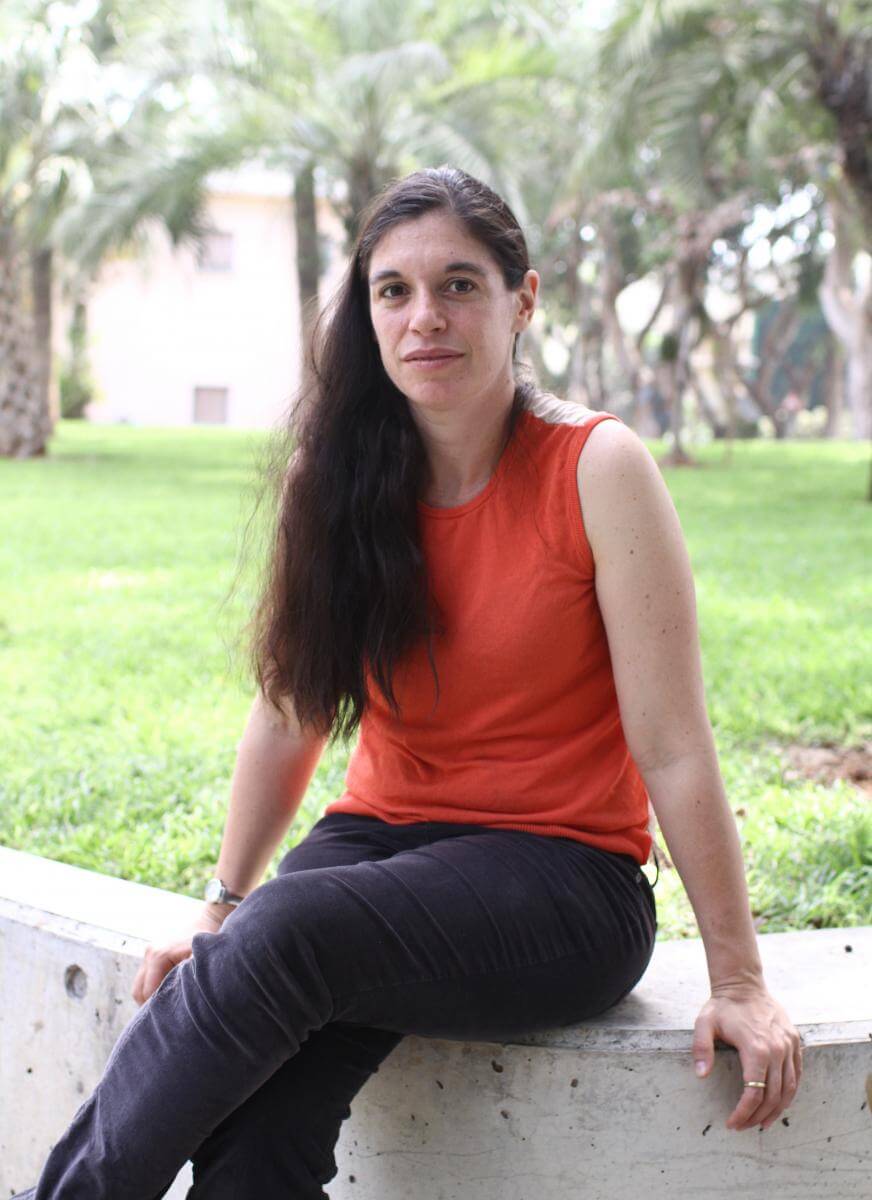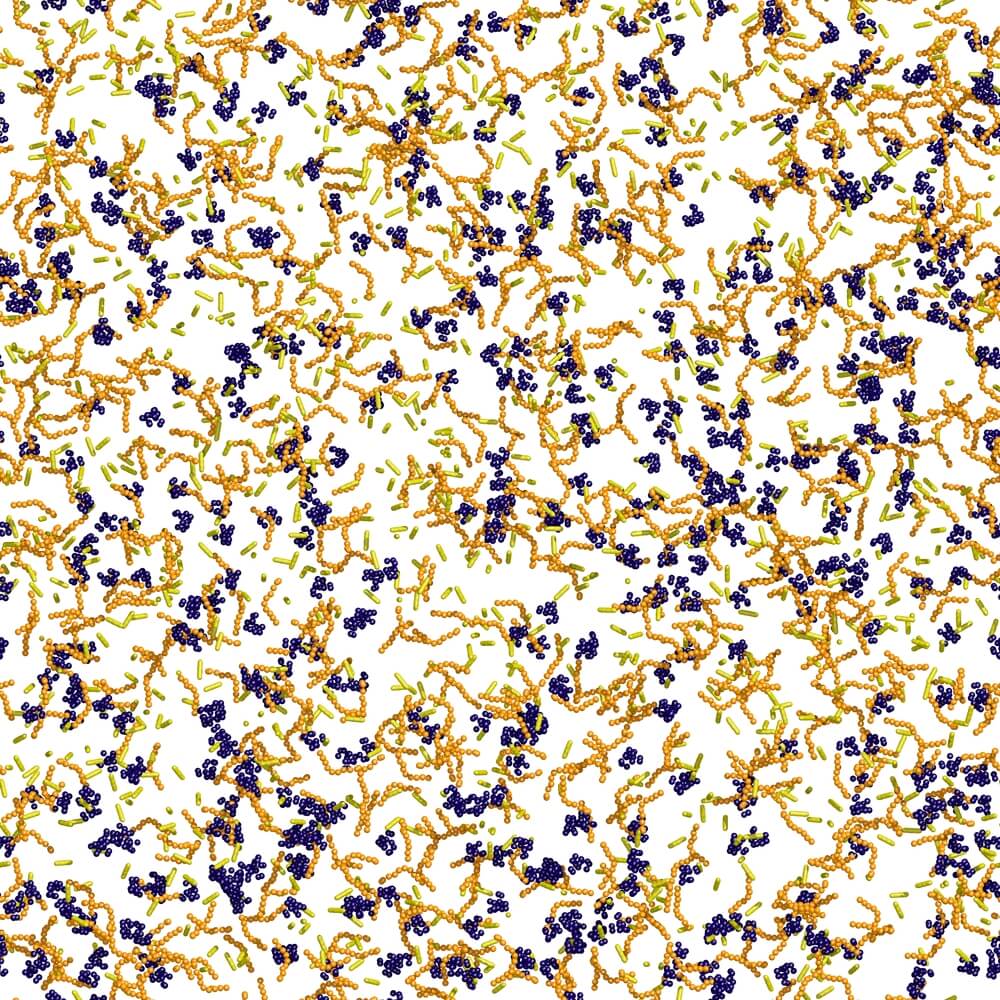The utopian vision of life in a commune has had difficulty existing in the kibbutz society, but in the world of bacteria, huge communes called biofilms thrive in many situations. Each such commune is protected by an external matrix, so that the bacteria are much better protected from environmental hazards, compared to those living freely outside.

The utopian vision of life in a commune has had difficulty existing in the kibbutz society, but in the world of bacteria, huge communes called biofilms thrive in many situations. Each such commune is protected by an external matrix, so that the bacteria are much better protected from environmental hazards, compared to those living freely outside.
While still a student, Dr. Ilana Kolodkin-Gal was fascinated by the ability of bacteria to create structured communities and communes, not only because their architecture amazed her, but also because of the questions that arose in her mind following the limitations imposed on individual bacteria: What happens to the freedom of choice in this situation? Can a single bacterium leave the "kibbutz"?
These are not just philosophical questions. Knowing how to break up, or conversely, preserve the bacterial communities, may be a matter of first-rate practical importance. Such communities are formed, for example, in artificial heart valves, catheters, synthetic joints, and almost every other prosthesis implanted in the human body. The treatment of these infections is particularly challenging, because the bacteria in the biofilm are resistant to many antibiotics, but the nature of this resistance is still not well understood. Biofilms that form on the wounds of diabetics are also resistant to many antibiotics, which sometimes leads to tissue death, which has to be surgically removed. The lungs of people with cystic fibrosis are covered with biofilms that damage the lung tissue and cause severe breathing difficulties. In contrast, biofilms covering the roots of plants are exceptionally beneficial because they protect the plants from pests.
During her post-doctoral studies at Harvard University, Dr. Kolodkin-Gal began to investigate the natural decomposition of bacterial communities, which sometimes occurs when they become too thick to allow nutrients to enter, and accumulate too much bacterial waste. She was able to identify small molecules called D-amino acids, secreted by the bacteria themselves to escape the matrix. Furthermore, she showed that it is possible to use these molecules not only to break down existing biofilms, but also to prevent their formation. She later discovered several more molecules, with a positive charge, that dissolve the biofilms, and found that some of them are able to break down biofilms made of many strains of bacteria, but some are effective against only a few strains.

In her new laboratory in the Department of Molecular Genetics at the Weizmann Institute of Science, Dr. Kolodkin-Gal continues these studies. She aims to find out how the internal scaffolds that hold the biofilms together are built, and how structural changes in the outer shell of the bacteria affect their behavior within the biofilm community.
These studies opened a new direction in microbiology, which may lead to the development of methods for breaking down biofilms that cause medical problems. In this context, Dr. Kolodkin-Gal's research on the staphylococcus bacterium, a common cause of infections in humans, is extremely important.
On the other hand, her research on beneficial bacteria may lead to the development of methods that will strengthen their organization in communes, for example to better protect plant roots. This approach would be more environmentally friendly than protecting the roots with pesticides. Another project concerning the protection of the environment involves new ideas for the treatment of carbon dioxide, which is considered an important factor in global warming. Such ideas can be drawn from "specialized" bacterial communities, which turn this gas into a solid mineral.
personal
It is not easy to establish a new laboratory and at the same time raise a small child, but Dr. Ilana Kolodkin-Gal does not shy away from the difficulty. When her son Yuval was born, two years ago, in the middle of her post-doctoral studies at Harvard University, she did not cut back on her working hours, she just spread them differently. Since she could no longer stay in the lab until 9 p.m., she filled in the gaps on the weekends. Today, when her schedule is even more intense, she finds the time to write research grant applications and read books after 23:30 p.m., after her son has fallen asleep.
Kolodkin-Gal was born in Holon, and received her doctorate in microbiology with honors from the Hebrew University of Jerusalem in 2009. In the same year, she received a scholarship from the Weizmann Institute, as part of the national program for the advancement of women in science, intended to help outstanding doctoral graduates go on post-doctoral research abroad with their families, She is especially grateful. The scholarship allowed her husband, Dr. Dror Kolodkin-Gal (they both adopted the double surname after they married), to join her in Boston, where it took him several months to find a job. Dror now directs research in the field of cancer at the Hadassah Medical Center in Jerusalem. The family lives near the Weizmann Institute.

4 תגובות
Here we are, we have published your comment
With all due respect to scientist Ilana Gal, and she deserves it in a big way! Please do not diminish the achievements of her husband Benny Dror Gal, Dror did not look for a job in Boston - Dror did his post-doctorate there at Howard University, after all his studies up to that point in Israel ended with honors, and is now director of a pancreatic cancer research laboratory at Hadassah Jerusalem!!! I would love to see that you corrected the article!!
Your hint is possible about the possibility of reducing carbon dioxide. Where can you read about it?
Respect to the Gal Kolodkin couple
It is interesting if it is possible to utilize the properties of biopolymers for the food industry, or to apply this legality to the industries of complex materials or chemistry